Nepal is the very watershed of Asia. Squeezed between India and Tibet, it stretches from rich subtropical forest to soaring Himalayan peaks: from jungly tiger habitat to the precipitous hunting grounds of the snow leopard. Climbing the hillside of one valley alone you can be sweltering in the shade of a banana palm in the morning, and sheltering from a snowstorm in the afternoon.Nepal’s cultural landscape is every bit as diverse as its physical one. Its peoples belong to a host of distinctive ethnic groups, and speak a host of languages. They live in everything from dense, ancient cities erupting with pagoda-roofed Hindu temples to villages perched on dizzying sweeps of rice-farming terraces and dusty highland settlements clustered around tiny monasteries. Religious practices range from Indian-style Hinduism to Tibetan Buddhism and from nature-worship to shamanism – the indigenous Newars, meanwhile, blend all these traditions with their own, intense tantric practices.
The cultural richness owes something to the shaping force of the landscape itself, and something else to the fact that it was never colonized. This is a country with profound national or ethnic pride, an astounding flair for festivals and pageantry and a powerful attachment to traditional ways. Its people famously display a charismatic blend of independent-mindedness and friendliness, toughness and courtesy – qualities that, through the reputations of Gurkha soldiers and Sherpa climbers in particular, have made them internationally renowned as people it’s a rare pleasure to work with or travel among.
But it would be misleading to portray Nepal as a fabled Shangri-la. Heavily reliant on its superpower neighbours, Nepal was, until 1990, the world’s last remaining absolute Hindu monarchy, run by a regime that combined China’s repressiveness and India’s bureaucracy. Long politically and economically backward, it has developed at uncomfortable speed in some areas while stagnating in others. Following a soul-scouring Maoist insurgency, which ended in 2006, it has ended up as a federal republic – governed, for the time at least, by Maoist rebels turned politicians. Nepal seems always to be racing to catch up with history, and the sense of political excitement in the country is thrillingly palpable.
When to go
Nepal is broadly temperate, with four main seasons centred around the summer monsoon. When considering the best time to visit, it’s worth considering that the majority of visitors, prioritizing mountain visibility, come in the autumn peak season (late Sept to late Nov), when the weather is clear and dry, and neither too cold in the high country nor too hot in the Terai. With the pollution and dust (and many bugs) washed away by the monsoon rains, the mountains are at their most visible, making this an excellent time for trekking. Two major festivals, Dasain and Tihaar, also fall during this period. The downside is that the tourist quarters and trekking trails are heaving, prices are higher and it may be hard to find a decent room.
Winter (Dec & Jan) is mostly clear and stable. It never snows in Kathmandu, but mornings can be dank and chilly there – and in trekking areas, the fierce cold can make lodge-owners shut up shop altogether. This is an excellent time to visit the Terai, and if you can face the cold, a rare time to be in the mountains too.
Spring (Feb to mid-April) is the second tourist season, with its warmer weather and longer days. Rhododendrons are in bloom in the hills towards the end of this period, and as the Terai’s long grasses have been cut, spring is the best time to visit for viewing wildlife – despite the increasing heat. The downsides are that haze can obscure the mountains from lower elevations (though it’s usually possible to trek above it) and stomach bugs are more common.
The pre-monsoon (mid-April to early June) brings ever more stifling heat, afternoon clouds, rain showers – and more stomach upsets. It also brings edginess: this is the classic time for popular unrest and illness. Trek high, where the temperatures are more tolerable.
Nepalis welcome the monsoon, the timing of which may vary by a few weeks every year, but typically begins in mid-June and peters out in the last weeks of September. The fields come alive with rushing water and green shoots, and this can be a fascinating time to visit, when Nepal is at its most Nepali: the air is clean, flowers are in bloom, butterflies are everywhere and fresh fruit and vegetables are particularly abundant. But there are also drawbacks: mountain views are rare, leeches come out in force along the mid-elevation trekking routes, roads and paths may be blocked by landslides, and flights may be cancelled.
Nepal’s capital, Kathmandu, is electrifyingly exotic, with its medieval warren of alleys, Hindu temples and Buddhist stupas, and its uniquely relaxed nightlife. The city is increasingly hectic, however, so many visitors make day-trips into the semi-rural Kathmandu Valley, and the astoundingly well-preserved medieval cities of Patan and Bhaktapur, or overnight at one of the mountain view-points on the valley rim, such as Nagarkot, in the Central Hills. A few explore the valley’s wealth of temples, towns and forested hilltops in more depth, or make road trips to the Tibet border or down the tortuous Tribhuwan Rajpath towards India. Most people will take the tourist bus six hours west of Kathmandu to Pokhara, an engagingly easygoing resort town in the Western Hills, set beside a lake and under a towering wall of white peaks. While many visitors are happy just to gaze at Pokhara’s views, or hang out in its bars, it also makes a great base for day-hikes and mountain-bike rides, yoga and meditation courses, and even paragliding and microlight flights. Other towns in the Western Hills – notably Gorkha with its impressive fortress, Manakamana with its wish-fulfilling temple, and Bandipur with its old-world bazaar – offer history and culture as well as scenery.
Where to go
Few travellers head into the flat Terai, along the border with India, unless it’s to enter the deservedly popular Chitwan National Park with its endangered Asian one-horned rhinos. Bardia National Park and two other rarely visited wildlife reserves are out there for the more adventurous. In the Western Terai Lumbini, Buddha’s birthplace, is a world-class pilgrimage site, as is Janakpur, a Hindu holy city in the east.
Nepal is most renowned, however, for trekking – hiking from village to village, through massive hills and lush rhododendron forests and up to the peaks and glaciers of the high Himalayas. The thrillingly beautiful and culturally rich Annapurna and Everest regions are the most oriented to trekkers, but other, once-remote areas are opening up, notably Mustang and Manaslu. Rafting down Nepal’s rivers and mountain biking, meanwhile, offer not only adventure but also a different perspective on the countryside and wildlife.
Map of Nepal
Think of Nepal and you think of mountains – this little country, sandwiched between India and Tibet, boasts the world’s highest and most breath-taking stretch of the Himalayas. But it is also incredibly diverse, with crumbling Hindu temples and lofty Buddhist monasteries, ancient festivals and laidback lakeside bars. Use our map of Nepal to start planning your trip.
You won’t be short of places to explore at this astonishingly varied destination. Marvel at the exquisite Janaki Mandir, a Mughal-style Hindu temple in Janakpur, join thousands of sadhus at the thrilling festival of Shiva Raatri, or wander the ancient town of Bhaktapur in the Kathmandu Valley. Adventurers can soak up the sublime mountain views at Pokhara’s shining lake or test their nerves rafting the waters of the Bhota Koshi. Not forgetting that Nepal boasts some of the finest treks on earth, from gentler climbs in Annapurna all the way up to Everest.
Itineraries
The best way to explore Nepal, of course, is to use this guide to create your own itinerary, but below we offer three recommended routes. “The Best of Nepal” covers the highlights – deservedly popular destinations, but you’ll never be far off the beaten track. “Kathmandu and Everest” adds a few Kathmandu Valley sights onto the Everest Base Camp trek, while “Exploring the West” gives you a memorable trip well away from most tourist itineraries.
Things not to miss in Nepal
#01 Trekking
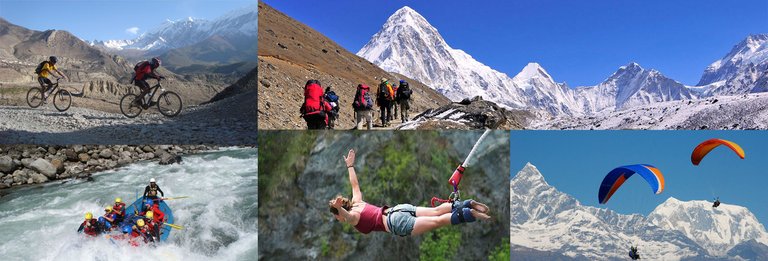
#02 Bhaktapur
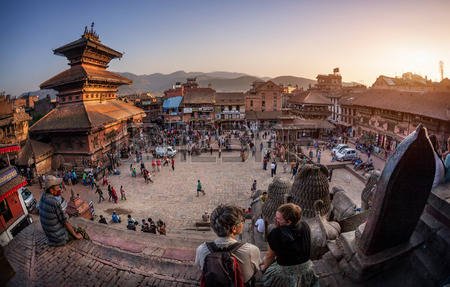
#03 Boudha![Boudha.jpg]
(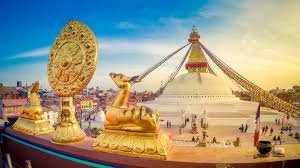 )
)
#04 Elephant bathtime in Sauraha
![intrepidtravelthailand_elephant_ride.jpg]
(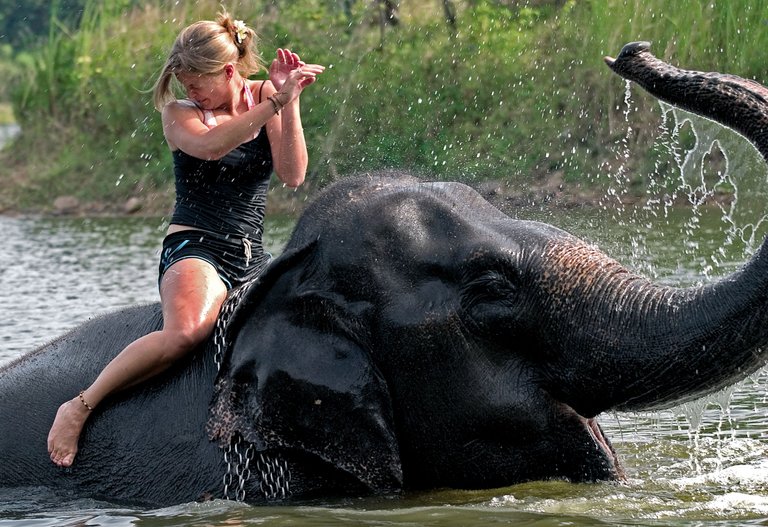 )
)
#05 Momo
These steamed meat or vegetable dumplings, resembling plump ravioli, are an addictive snack. They’re served with a chilli sauce, and you can find them everywhere from street stalls to fancy restaurants.
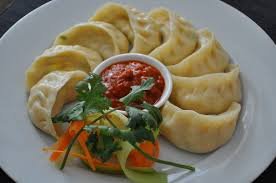
#06 Dasain
Dasain is the high point of the busy Nepali festival calendar. Masked dancers perform elaborate rituals in Bhaktapur and Kathmandu, people travel for days to be at home with their families, and children celebrate by playing on bamboo swings.
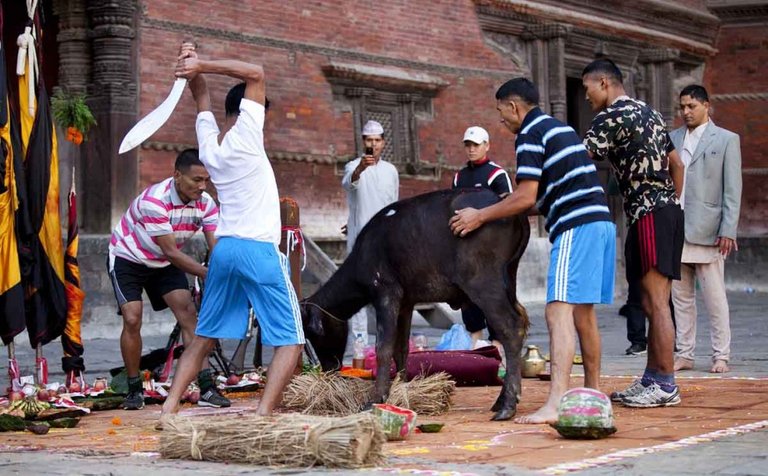
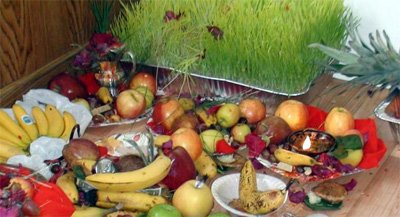
#07 The Himalayas
Even if you don’t trek, you cannot miss a hilltop view of the world’s greatest and most inspiring mountain range. Nagarkot is the classic viewpoint outside Kathmandu; Sarangkot outside Pokhara.

#08 Shiva raatri
This winter festival brings tens of thousands of Shiva devotees to Pashupatinath, the holiest of river gorges.
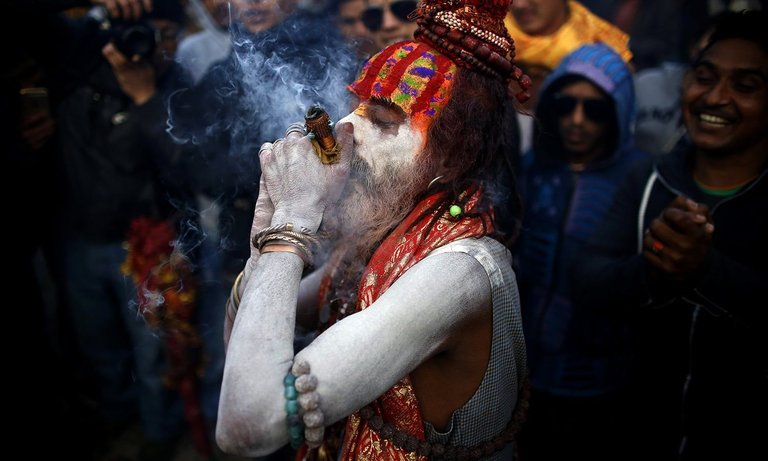
#09 Janaki Mandir
Worshippers flock to Janakpur’s Mughal-style Janaki Mandir to pay homage to legendary lovers Ram and Sita.
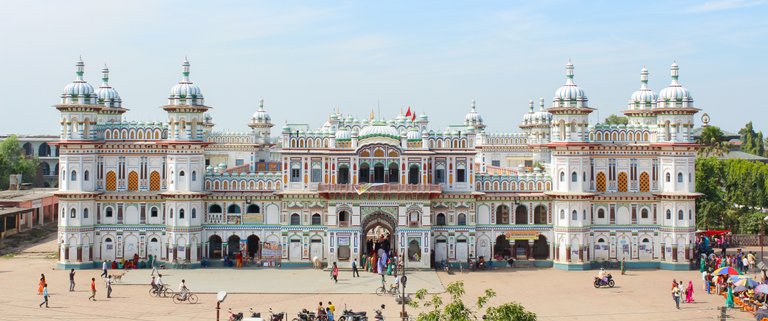
#10 Jungle wildlife
You’ll get closer to a wild rhino than might seem advisable at Chitwan and Bardia national parks.


Will be counitiued....
I have been living in India for 3 years.
I am so willing to go to nepal as it seems even better.
Thank you for all these details, I copy and keep that for next trip.
Thank you for sharing these informations
Congratulations @waypeace! You have completed some achievement on Steemit and have been rewarded with new badge(s) :
<p dir="auto"><a href="http://steemitboard.com/@waypeace" target="_blank" rel="noreferrer noopener" title="This link will take you away from hive.blog" class="external_link"><img src="https://images.hive.blog/768x0/https://steemitimages.com/70x80/http://steemitboard.com/notifications/firstcommented.png" srcset="https://images.hive.blog/768x0/https://steemitimages.com/70x80/http://steemitboard.com/notifications/firstcommented.png 1x, https://images.hive.blog/1536x0/https://steemitimages.com/70x80/http://steemitboard.com/notifications/firstcommented.png 2x" /> You got a First Reply<br /> <a href="http://steemitboard.com/@waypeace" target="_blank" rel="noreferrer noopener" title="This link will take you away from hive.blog" class="external_link"><img src="https://images.hive.blog/768x0/https://steemitimages.com/70x80/http://steemitboard.com/notifications/votes.png" srcset="https://images.hive.blog/768x0/https://steemitimages.com/70x80/http://steemitboard.com/notifications/votes.png 1x, https://images.hive.blog/1536x0/https://steemitimages.com/70x80/http://steemitboard.com/notifications/votes.png 2x" /> Award for the number of upvotes<br /> <a href="http://steemitboard.com/@waypeace" target="_blank" rel="noreferrer noopener" title="This link will take you away from hive.blog" class="external_link"><img src="https://images.hive.blog/768x0/https://steemitimages.com/70x80/http://steemitboard.com/notifications/comments.png" srcset="https://images.hive.blog/768x0/https://steemitimages.com/70x80/http://steemitboard.com/notifications/comments.png 1x, https://images.hive.blog/1536x0/https://steemitimages.com/70x80/http://steemitboard.com/notifications/comments.png 2x" /> Award for the number of comments <p dir="auto">Click on any badge to view your own Board of Honor on SteemitBoard.<br /> For more information about SteemitBoard, click <a href="https://steemit.com/@steemitboard" target="_blank" rel="noreferrer noopener" title="This link will take you away from hive.blog" class="external_link">here <p dir="auto">If you no longer want to receive notifications, reply to this comment with the word <code>STOP <blockquote> <p dir="auto">By upvoting this notification, you can help all Steemit users. Learn how <a href="https://steemit.com/steemitboard/@steemitboard/http-i-cubeupload-com-7ciqeo-png" target="_blank" rel="noreferrer noopener" title="This link will take you away from hive.blog" class="external_link">here!